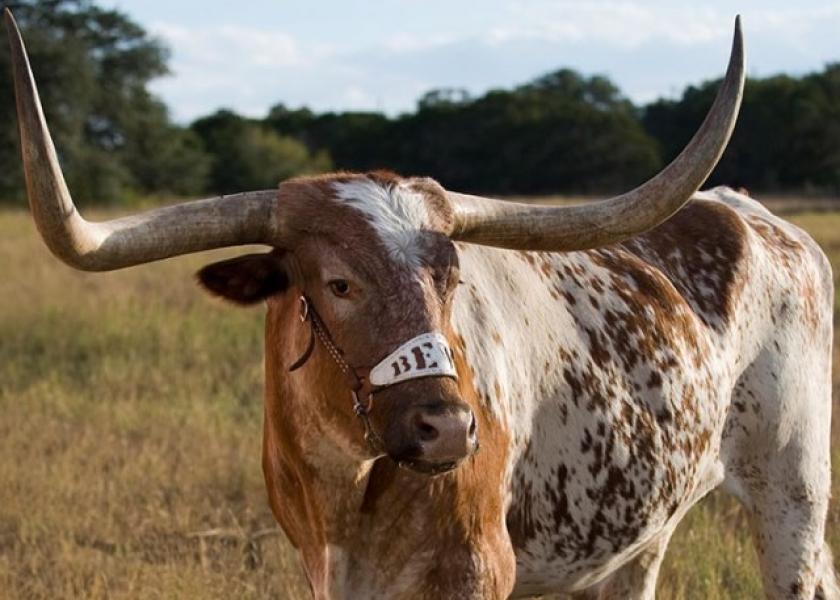Texas Mascot Dies from Bovine Leukemia

College football saw another crazy weekend of games. Five games pitted top 20 teams against one another. Florida-Louisiana State was decided on a trick play via a pass to a kicker. Michigan had the joy of victory turn into the agony of defeat on the last play of the game versus instate rival Michigan State.
For the University of Texas, this weekend was a bye week and it came at a goodtime. The Longhorns just upset arch rival Oklahoma in the Red River Rivalry game at the Texas State Fair the previous week. After the game it was announced Texas’ mascot BEVO XIV would be retiring and no longer visiting “The 40 Acres” in Austin. BEVO’s retirement didn’t last long with the Longhorn steer dying in the night on Friday. The cause of death was Bovine Leukemia Virus (BLV).
BLV is a fairly common problem in the beef industry with 39% of beef cattle herds containing a carrier of the virus, according to National Animal Health Monitoring System (NAHMS) data. It is more often seen in dairy cattle where 90% of herds are estimated to host carriers.
The disease is caused by a retrovirus and can be spread through the transfer of blood from an infected animal to a vulnerable animal. Times where transmission can occur are rectal palpation, dehorning, tattooing, injections and blood collection. An infected bred cow can also pass it to the calf in utero or via colostrum at nursing.
As cattle get older they become more susceptible to the disease. Clinical signs begin to appear around 5-6 years of age.
Lew Strickland, extension veterinarian with the University of Tennessee says approximately 5% of BLV-infected cattle develop lymphosarcoma, a tumor that typically shows swelling around the lymph nodes.
The tumors can be found in other areas of the body like the abomasum, eye socket or heart, leading to an array of complications.
“There are no treatments or vaccines available for BLV. Management and prevention is key in control of this disease,” Strickland says. He adds animals can be diagnosed for BLV with a simple blood test sent to a local diagnostic lab.
Besides being deadly to cows BLV is costly on production for infected animals. A Michigan State University study found that milk production dropped 220 lb. per cow for every 10% infected in the herd.
“If you assume a third of your cows are infected, that means a milk loss of 725 lb. of milk per cow. Multiply that times your mailbox milk price. Even at $16 per cwt, that’s a loss of about $120 per cow, or $12,000 for every 100 cows in your herd. Ouch,” writes Dairy Today editor Jim Dickrell.







